
How to Use MQ 135: Examples, Pinouts, and Specs
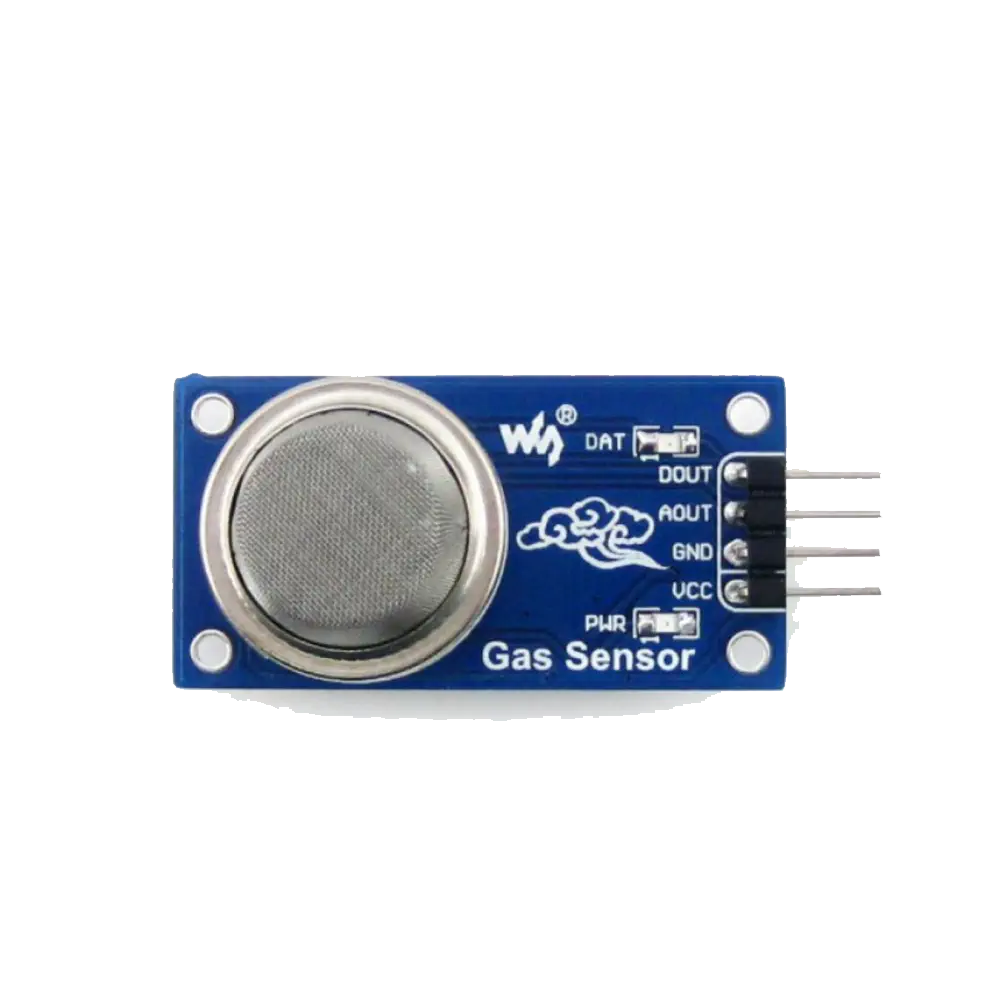
 Design with MQ 135 in Cirkit Designer
Design with MQ 135 in Cirkit DesignerIntroduction
The MQ-135 is a versatile gas sensor designed to detect a wide range of gases, including ammonia, nitrogen, oxygen, alcohols, aromatic compounds, sulfide, and smoke. It is widely used in air quality monitoring systems, industrial applications, and safety systems to ensure a healthy and safe environment. The sensor provides an analog output that can be easily interfaced with microcontrollers like the Arduino UNO for real-time monitoring and data logging.
Explore Projects Built with MQ 135
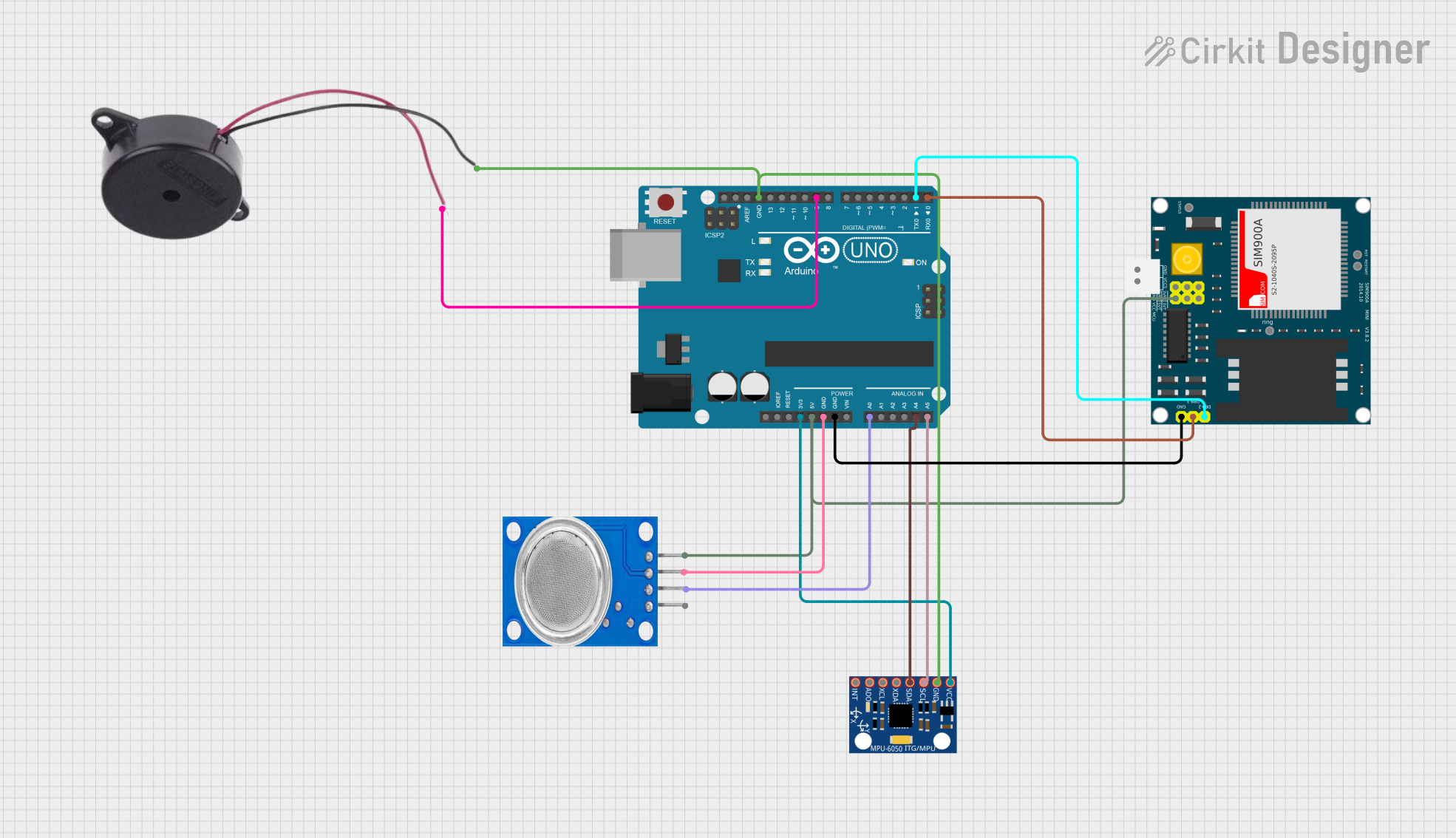
 Open Project in Cirkit Designer
Open Project in Cirkit Designer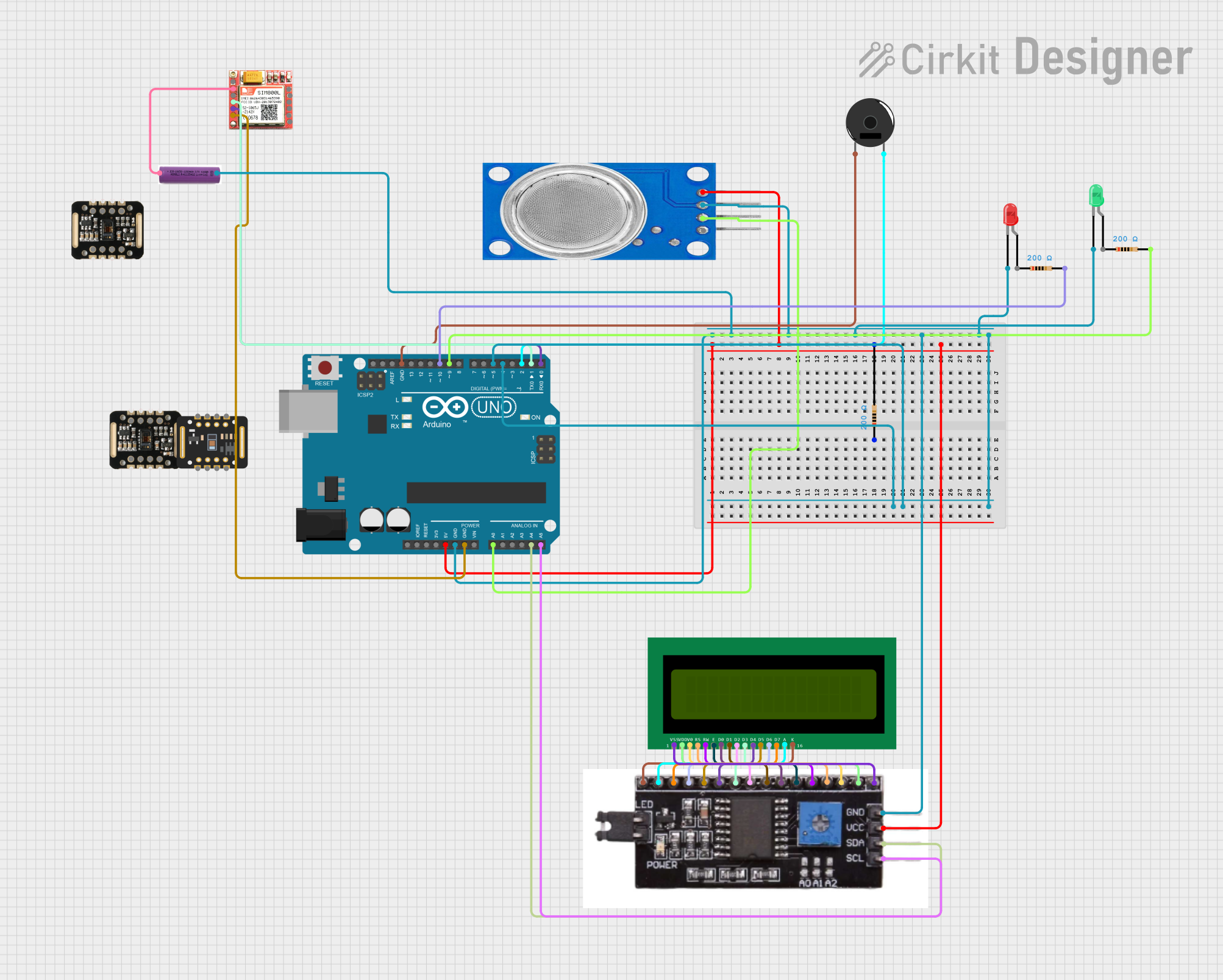
 Open Project in Cirkit Designer
Open Project in Cirkit Designer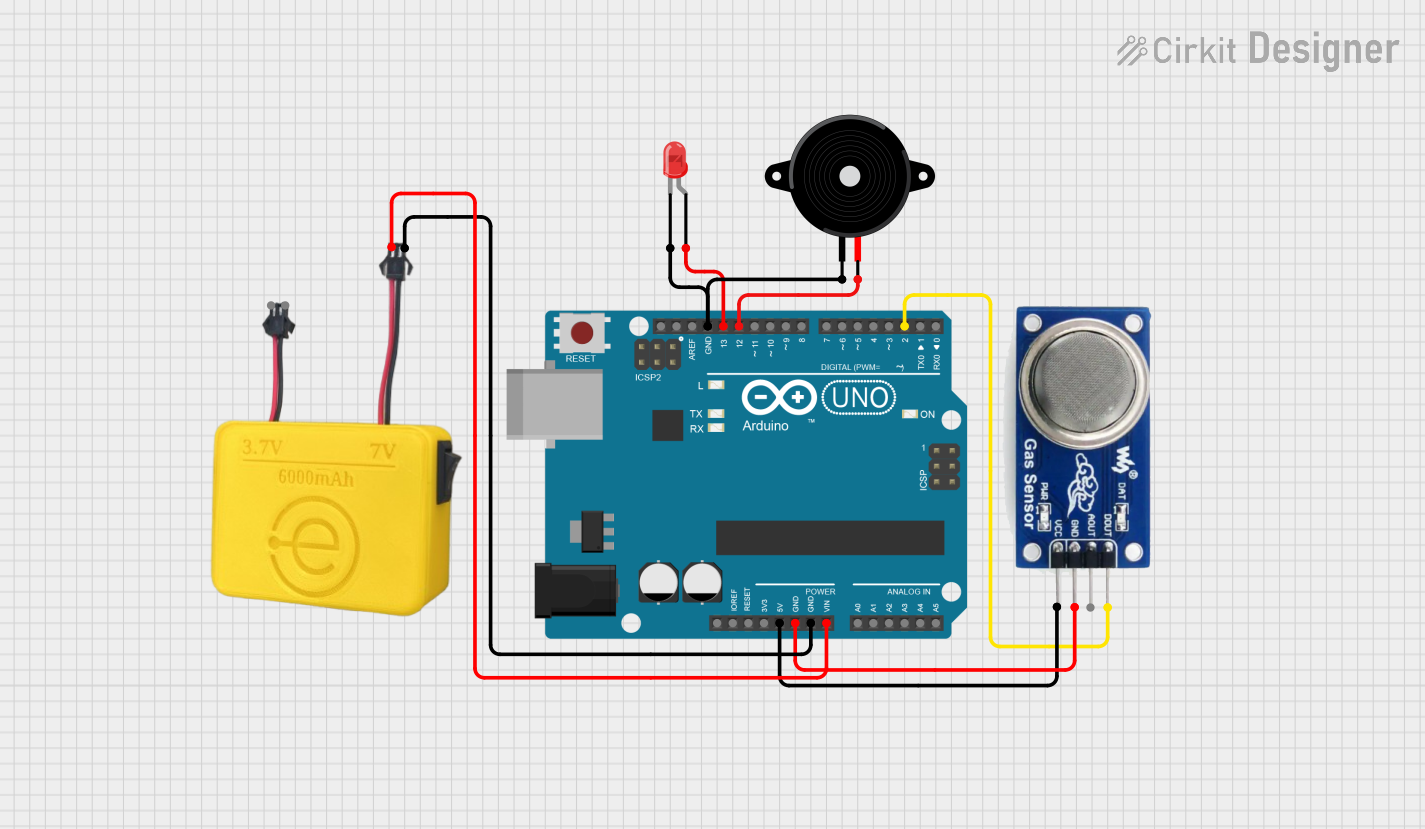
 Open Project in Cirkit Designer
Open Project in Cirkit Designer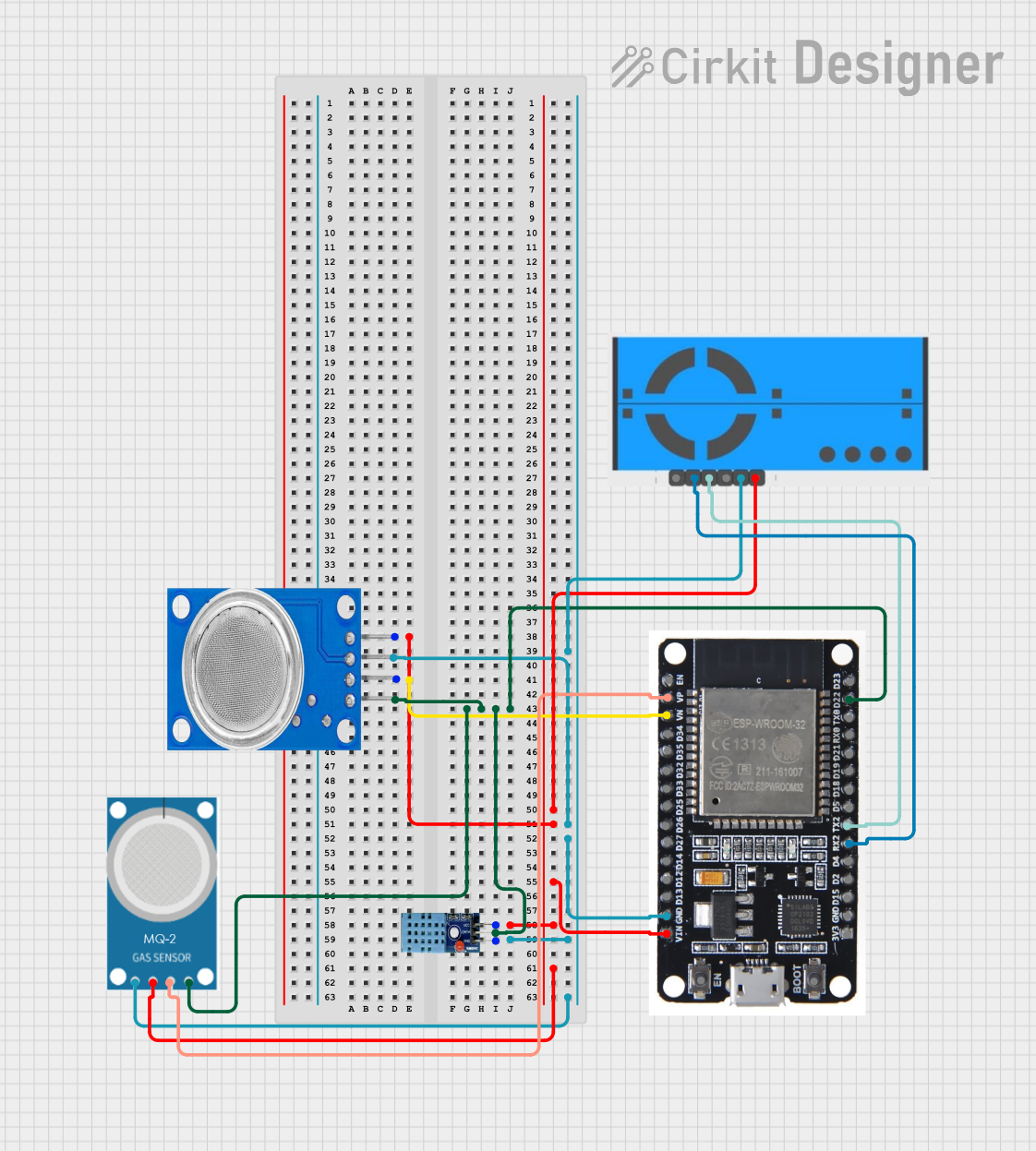
 Open Project in Cirkit Designer
Open Project in Cirkit DesignerExplore Projects Built with MQ 135

 Open Project in Cirkit Designer
Open Project in Cirkit Designer
 Open Project in Cirkit Designer
Open Project in Cirkit Designer
 Open Project in Cirkit Designer
Open Project in Cirkit Designer
 Open Project in Cirkit Designer
Open Project in Cirkit DesignerTechnical Specifications
Key Technical Details
| Parameter | Value |
|---|---|
| Operating Voltage | 5V DC |
| Load Resistance | 20kΩ (typical) |
| Heating Resistance | 33Ω ± 5% |
| Heating Power | ≤ 800mW |
| Sensing Resistance | 10kΩ - 60kΩ (in clean air) |
| Detection Range | 10 - 1000 ppm (NH3, NOx, etc.) |
| Preheat Time | ≥ 24 hours |
| Response Time | ≤ 10 seconds |
| Recovery Time | ≤ 30 seconds |
| Operating Temperature | -20°C to 50°C |
| Humidity Range | 20% - 90% RH |
Pin Configuration and Descriptions
| Pin No. | Pin Name | Description |
|---|---|---|
| 1 | VCC | Power supply (5V DC) |
| 2 | GND | Ground |
| 3 | AOUT | Analog output voltage proportional to gas concentration |
| 4 | DOUT | Digital output (threshold-based) |
Usage Instructions
How to Use the Component in a Circuit
- Power Supply: Connect the VCC pin to a 5V DC power supply and the GND pin to the ground.
- Analog Output: Connect the AOUT pin to an analog input pin on your microcontroller (e.g., A0 on Arduino UNO).
- Digital Output: Optionally, connect the DOUT pin to a digital input pin on your microcontroller if you want to use the threshold-based digital output.
Important Considerations and Best Practices
- Preheat Time: The sensor requires a preheat time of at least 24 hours for optimal performance. Ensure the sensor is powered on for this duration before taking any measurements.
- Calibration: Calibrate the sensor in a clean air environment to establish a baseline reading. This helps in accurately detecting gas concentrations.
- Ventilation: Ensure proper ventilation around the sensor to avoid saturation and ensure accurate readings.
- Avoid Contaminants: Keep the sensor away from water, oil, and other contaminants that could affect its performance.
Sample Arduino Code
// MQ-135 Gas Sensor - Arduino UNO Example Code
const int analogPin = A0; // Analog input pin connected to AOUT
const int digitalPin = 2; // Digital input pin connected to DOUT (optional)
int sensorValue = 0; // Variable to store the analog value
void setup() {
Serial.begin(9600); // Initialize serial communication at 9600 bps
pinMode(digitalPin, INPUT); // Set digital pin as input (optional)
}
void loop() {
sensorValue = analogRead(analogPin); // Read the analog value from the sensor
Serial.print("Analog Value: ");
Serial.println(sensorValue); // Print the analog value to the serial monitor
// Optional: Read the digital output
int digitalValue = digitalRead(digitalPin);
Serial.print("Digital Value: ");
Serial.println(digitalValue); // Print the digital value to the serial monitor
delay(1000); // Wait for 1 second before taking the next reading
}
Troubleshooting and FAQs
Common Issues Users Might Face
No Output or Incorrect Readings:
- Solution: Ensure the sensor is properly connected to the power supply and ground. Check for loose connections and ensure the preheat time is met.
Fluctuating Readings:
- Solution: Ensure the sensor is in a stable environment with consistent airflow. Avoid placing the sensor near sources of interference or contaminants.
Slow Response Time:
- Solution: Verify that the sensor is not saturated with high concentrations of gas. Allow the sensor to recover in clean air if necessary.
FAQs
How long does the sensor last?
- The MQ-135 sensor has a lifespan of approximately 2 years under normal operating conditions.
Can the sensor detect multiple gases simultaneously?
- Yes, the sensor can detect a range of gases, but it provides a combined output. Specific gas concentration detection requires calibration and additional processing.
Is the sensor waterproof?
- No, the MQ-135 sensor is not waterproof. Avoid exposure to water and other liquids.
By following this documentation, users can effectively integrate the MQ-135 gas sensor into their projects, ensuring accurate and reliable gas detection for various applications.